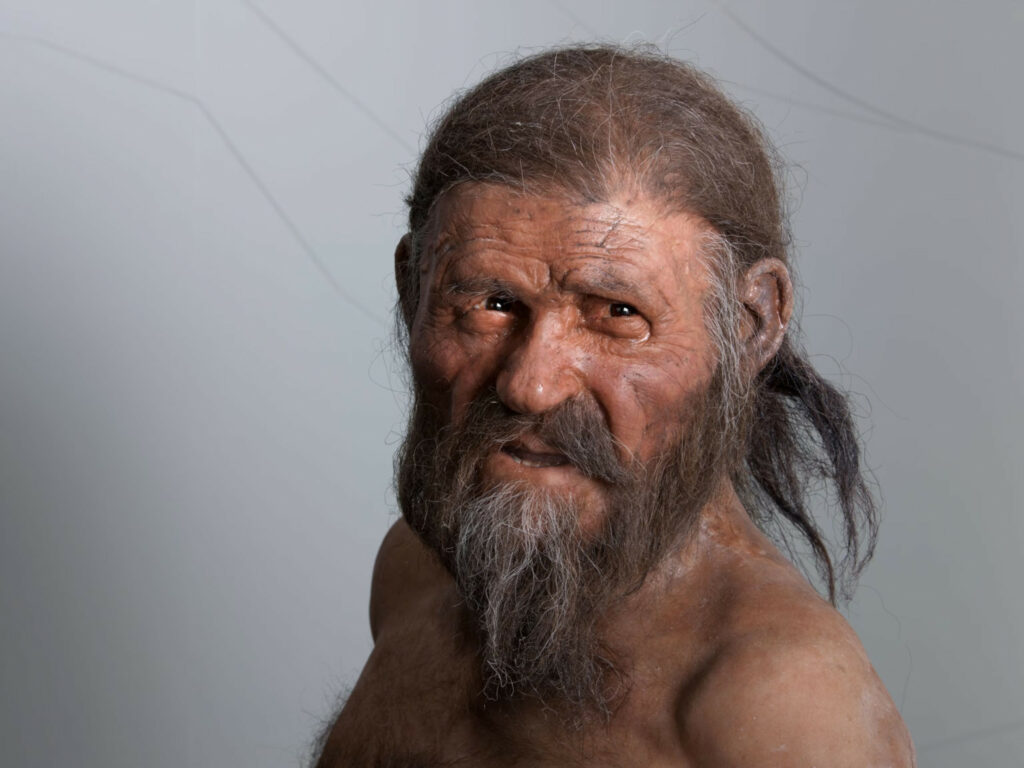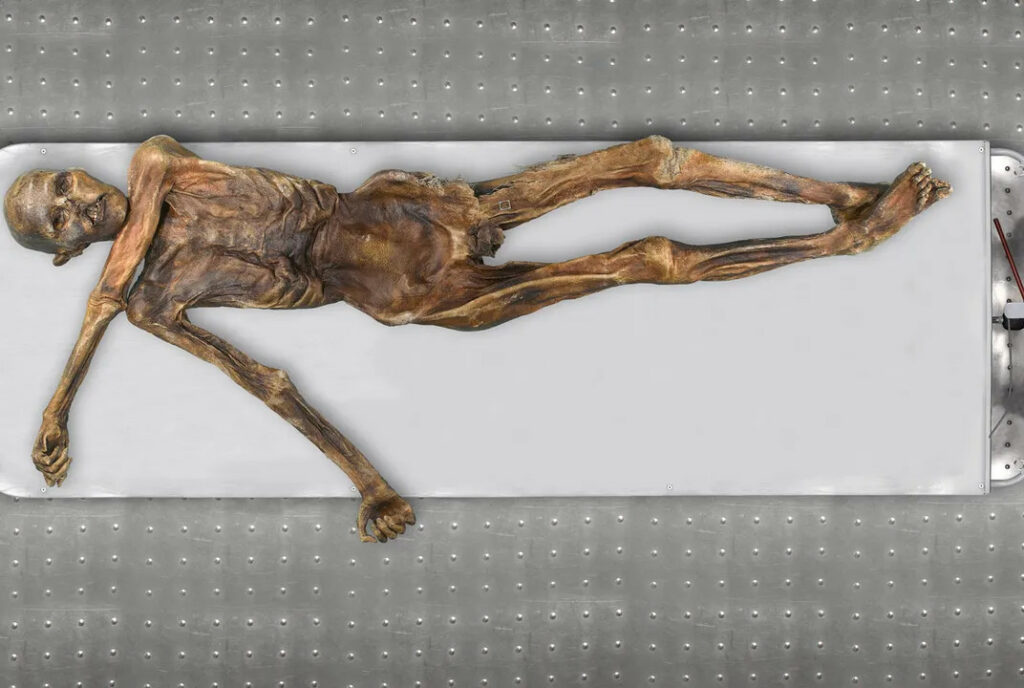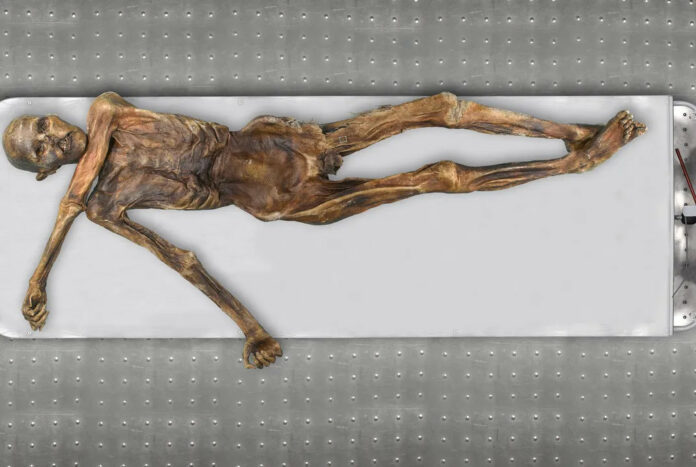In 1991, German hikers made a stunning discovery high in the Tyrolean Alps along the Austrian-Italian border. Emerging from the melting ice was Ötzi, a 5,300-year-old mummy who had been murdered with an arrow to the back. Since then, this prehistoric celebrity has attracted 300,000 visitors a year to the South Tyrol Museum of Archaeology in Bolzano, Italy, where he rests in a custom cooling chamber.

Ötzi’s Genetic Revelations
Physical Appearance

A new detailed genetic study published in Cell Genomics has revealed fascinating insights into what Ötzi looked like and his ancestral lineage. Contrary to artists’ depictions of him with lighter skin, the study shows Ötzi had dark eyes and skin pigmentation darker than that of modern Greeks or Sicilians. Surprisingly, the middle-aged Iceman also suffered from male pattern baldness.
Ancestral Origins
Genetic comparisons suggest Ötzi is largely descended from Anatolian farmers who first brought agriculture to Europe around 9,000 years ago, migrating from what is now Turkey to Greece and the Balkans. Ötzi’s genes show little mixing with the hunter-gatherer populations already living in Europe at the time, indicating his community was small and isolated in their remote alpine environment.

Health Insights
Despite the physical scars of a tough life, including broken bones, cavities, and parasites, Ötzi’s genes reveal hidden health information. He had a genetic predisposition to cardiovascular disease, type 2 diabetes, and obesity, but his active lifestyle and diet prevented these from developing.
Conclusion
As Europe’s glaciers melt, more ancient remains may emerge, but for now, Ötzi provides an unprecedented glimpse into Copper Age life. Researchers are collecting genetic data from about 100 of his contemporaries’ skeletons to determine if the Iceman was a typical individual of his time or somehow unique. Regardless, Ötzi’s mummified remains and the genetic secrets they hold continue to captivate and inform us about our prehistoric past.

